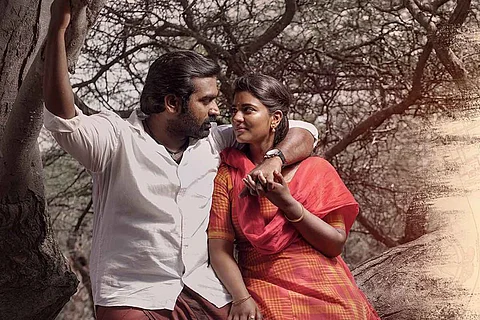

Aishwarya Rajesh’s upcoming Tamil film Ka Pae Ranasingam, which has Vijay Sethupathi in an extended cameo, will be releasing on the recently launched Zee Plex platform on a pay-per-view basis this October 2. While we’ve now seen several commercial films taking to direct Over-The-Top (OTT) release, Ka Pae will be the first big Indian film to release directly on a pay-per-view platform. For this reason, the decision is being closely watched by those in the industry.
Viewers who wish to watch the film will have to select the show timing and pay Rs 199 for one time viewing, not restricted to the number of persons watching it at once. The film can be played using a set-top-box and also by logging into the Zee5 app.
TNM reached out to Kotapadi J Rajesh, the film’s producer (KJR Studios), to find out what went behind making the decision and his thoughts on how well the Tamil audience might respond to it.
As any other producer would say, I have made this film with a lot of passion and interest and I really wanted to release the film in theatres and watch it with the crowd. But these are challenging and unprecedented times. And no one saw this coming. Unlike many other producers, this is not the only film I’m producing. I have 10 other projects in various stages of production and I had to make this decision to be able to execute and release my other films with ease as well. From a business point of view, I couldn’t risk holding on to Ka Pae Ranasingam for longer when I had a lucrative release offer in front of me from Zee. Hence the decision.
Also, straight OTT-only release restricts the number of people who can watch the film. My mother or your mother might not have Zee 5, Amazon Prime Video or Netflix subscription at home. But all of them have a set-top box and TV at home. We wanted to take the film to that crowd as well. And this pay-per-view option helps us do that.
Kotapadi J Rajesh
The idea has a fair amount of risk to it since we don’t just have the burden of promoting the film, but also the concept of pay-per-view itself. The idea of pay-per-view on DTH and OTT is pretty new to us and no film release has happened this way before. But this has to begin somewhere. I wouldn’t call this the future of cinema because theatres are here to stay, but this is going to expand our horizons. I think this step that we’ve taken paves the path for it. When 10 other films release this way, producers will look back and hopefully, appreciate that we at KJR Studios initiated this with Ka Pae Ranasingam.
From our first film, Aramm, as a producer we have always wanted to make the right kind of films. Films that have something to say, something strong to convey. But at the same time, we’re in this for the business of it as well. That being said, when Zee watched Ka Pae Ranasingam, they loved it. Initially, the discussion was only for OTT. But when Zee proposed the idea of DTH plus OTT, I thought, why not? To me, given the COVID situation and in the near future, even if theatres open with 50% occupancy, I might not be able to make the kind of money I should to break even financially. But with this offer, I am on safe ground.
The decision to price the film at Rs 199 is Zee’s, not ours. We have sold our film to them and as buyers, they get to make that decision based on their business prospects. Rs 199 might seem like a higher price than a cinema ticket price but at Rs 199, an entire family gets to watch the film. That’s where the difference comes in. In theatres, you would have had to spend roughly Rs 1,000 to 1,500 to be able to do that. So 199 for a family of four, or even two, is still a very pocket-friendly option.
As a producer, I'm sincerely hoping that a day comes when there will be a fool-proof way to be able to protect our films from piracy. Even theatrical releases get pirated before the end of the second show. We face the same risks with a digital release. We have a strong anti-piracy team in place to ensure that this doesn’t happen and we are acquiring court orders pan-India to take down any websites that pirate our film. We’re hoping this curbs the risk of piracy. But at the end of the day, a lot lies in the hands of filmgoers. If filmgoers believe that our film or any film for that matter, deserves the respect that it does, they will not indulge in or consume any pirated data.
Every summer since IPL began, producers have been worried about the films releasing during the IPL window. But films seem to do just fine. Our audience are able to segregate cricket and cinema as two different forms of entertainment. One cannot satisfy the other. We’re hoping that come October 2, people will want to watch Ka Pae Ranasingam, and following the initial wave of people who watch, the positive word of mouth will pull other people to watch the film too. I’m confident that we’ve made a good film.
Most producers and other technicians who have spoken to me have told me that they are surprised but happy for this move that we have made. Some producers have told me that they are eager to explore this avenue as well and Ka Pae Ranasingam’s release will give them clear ideas. There has been some skepticism as well, which is always the case when someone makes a bold move. But I always take skepticism and welcome it with the same spirit.